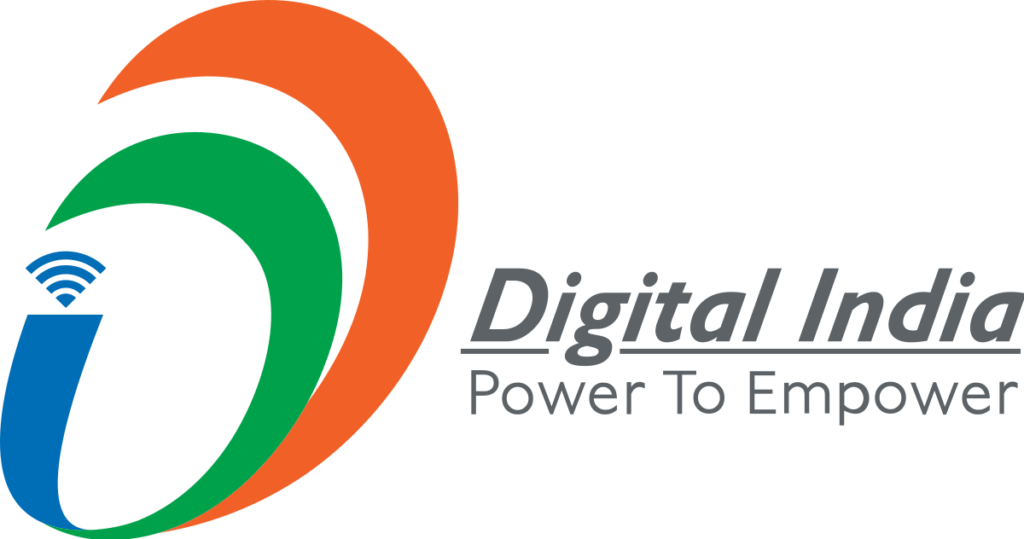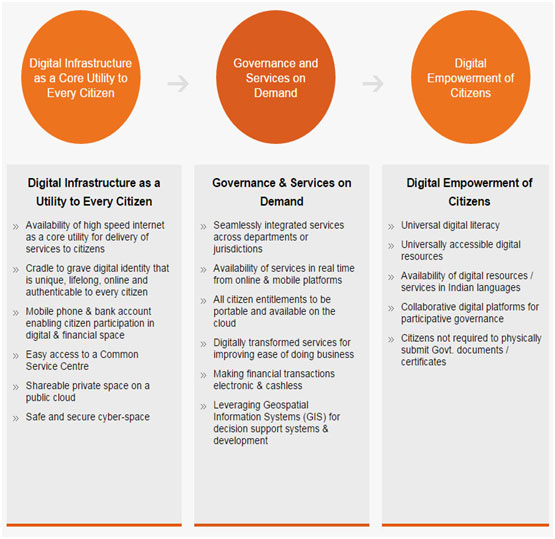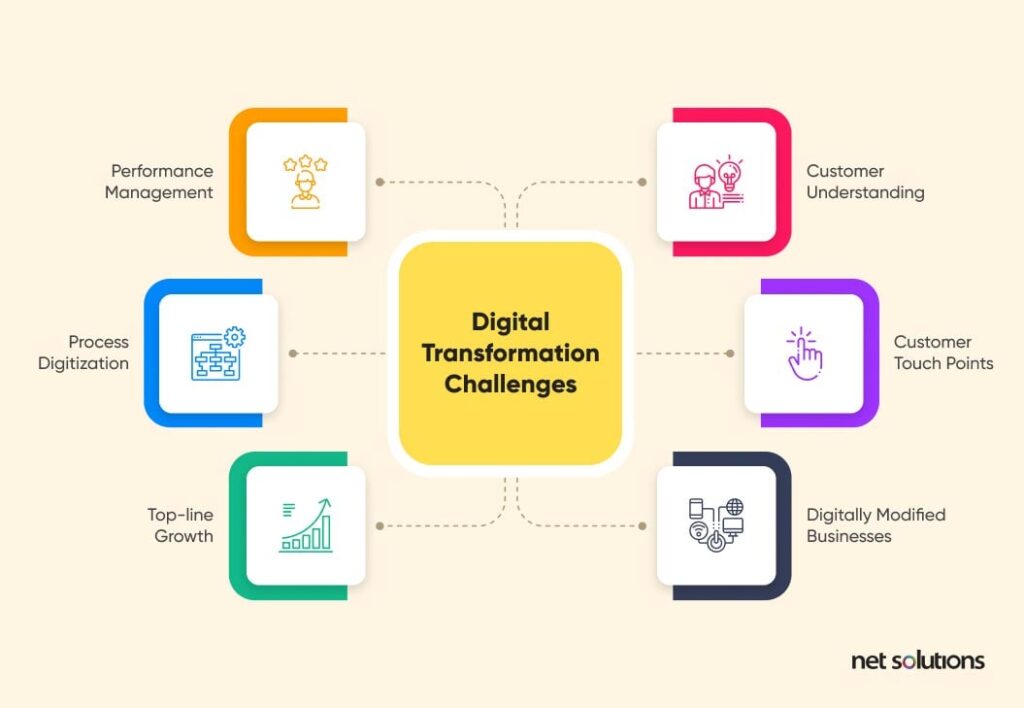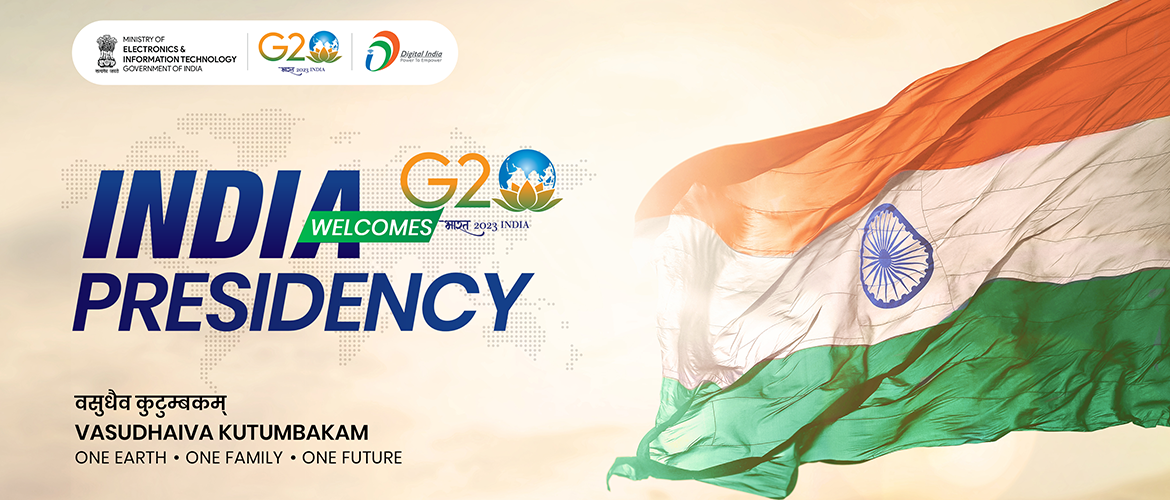
Launched in 2015, the Digital India Programme aims to empower India’s citizens and businesses by improving digital infrastructure, delivering government services electronically, and fostering a culture of innovation. This article explores the program’s vision, key initiatives, and its impact on India’s digital transformation journey.
Introduction
In 2015, the Government of India embarked on an ambitious mission: The Digital India Programme. This flagship initiative envisions a digitally empowered society and a thriving knowledge economy. By bridging the digital divide, fostering innovation, and making government services more accessible, the program aims to propel India into the digital age.
The Digital India Programme rests on nine pillars, including Broadband Highways, Universal Access to Mobile Connectivity, Public Internet Access Programme, e-Governance, e-Kranti, Information for All, Electronics Manufacturing, IT for Jobs, and Early Harvest Programmes. By leveraging technology to enhance governance, improve service delivery, and drive economic growth, the Digital India Programme is paving the way for a more connected and prosperous future for all citizens.
The Vision of the Digital India Programme

Digital India is a multifaceted program with three core pillars:
a) Infrastructure as a Utility:
- Availability of high speed internet as a core utility for delivery of services to citizens
- Cradle to grave digital identity that is unique, lifelong, online and authenticable to every citizen
- Mobile phone & bank account enabling citizen participation in digital & financial space
- Easy access to a Common Service Centre
- Shareable private space on a public cloud
- Safe and secure cyber-space
b) Governance & Services on Demand: This pillar seeks to transform how citizens interact with the government. It promotes e-governance initiatives, making government services accessible online and streamlining processes. This improves transparency, reduces corruption, and enhances citizen participation. This Includes:
- Seamlessly integrated services across departments or jurisdictions
- Availability of services in real time from online & mobile platforms
- All citizen entitlements to be portable and available on the cloud
- Digitally transformed services for improving ease of doing business
- Making financial transactions electronic & cashless
- Leveraging Geospatial Information Systems (GIS) for decision support systems & development.
c) Digital Empowerment of Citizens: This pillar focuses on bridging the digital divide and empowering citizens with the necessary skills to participate effectively in the digital world. This includes promoting digital literacy programs, facilitating access to affordable devices, and creating awareness about cyber security. These are as follows
- Universal digital literacy
- Universally accessible digital resources
- Availability of digital resources / services in Indian languages
- Collaborative digital platforms for participative governance
- Citizens not required to physically submit Govt. documents / certificates
Approach & Methodology
Approach & Methodology for Digital India Programme are :
- Ministries/Departments/States would fully leverage the Common & Support ICT Infrastructure established by GOI.
- Ministries / Departments / States would fully leverage the Common and Support ICT Infrastructure established by GoI. DeitY would also evolve/ lay down standards and policy guidelines, provide technical and handholding support, undertake capacity building and R&D etc.
- The existing/ ongoing e-governance initiatives would be suitably revamped to align them with the principles of Digital India. Scope enhancement, Process Reengineering, use of integrated & interoperable systems and deployment of emerging technologies like cloud & mobile would be undertaken to enhance the delivery of Government services to citizens.
- States would be given flexibility to identify for inclusion additional state-specific projects, which are relevant for their socio-economic needs.
- e-Governance would be promoted through a centralised initiative to the extent necessary, to ensure citizen-centric service orientation, interoperability of various e-Governance applications and optimal utilisation of ICT infrastructure/ resources, while adopting a decentralised implementation model.
- Successes would be identified and their replication promoted proactively with the required productisation and customisation wherever needed.
- Public Private Partnerships would be preferred wherever feasible to implement e-governance projects with adequate management and strategic control.
- Adoption of Unique ID would be promoted to facilitate identification, authentication and delivery of benefits.
- Restructuring of NIC would be undertaken to strengthen the IT support to all government departments at the Centre and the State levels.
Benefits
The Digital India Programme, a flagship initiative of the Government of India, offers a multitude of benefits that are transforming the nation’s digital landscape. Here are some key benefits of the Digital India Programme:
- Infrastructure Development: The programme focuses on providing high-speed internet connections in rural areas, ensuring that even remote regions have access to digital services and resources.
- Digital Transformation: Through initiatives like the Public Internet Access Programme, Digital India is driving the digital transformation of the country, making India one of the top digitally adopting nations globally.
- Economic Growth: Experts predict that by 2022, India’s digital economy will be worth $1 trillion, showcasing the significant economic impact of the Digital India Programme.
- Improved Governance: Digital India has considerably reduced the distance between the government and citizens, enabling the delivery of services directly to beneficiaries in a transparent and corruption-free manner.
- Empowerment of Citizens: The programme aims to empower citizens through universal digital literacy, making all government documents accessible on the cloud, and providing digital resources in multiple Indian languages.
- Reduction of Black Economy: Digital India facilitates online transactions monitoring, making it easier to track payments and prevent illegal transactions, contributing to the reduction of the black economy.
- Increased Revenue: Monitoring sales and taxes has become more efficient, ensuring that merchants cannot evade paying taxes, ultimately leading to the growth of the country’s overall economic status.
- Creation of Jobs: The Digital India initiative has created new job opportunities and enhanced employment prospects in various sectors, contributing to economic growth and development.
- Empowerment through Digital Payments: The programme enables direct transfer of subsidies to Aadhaar-linked bank accounts, ensuring that people receive their entitlements promptly without delays.
- E-Governance: Digital India paves the way for efficient e-governance, providing quicker and safer access to government services, including obtaining certificates and accessing information easily.
These benefits highlight the transformative impact of the Digital India Programme in enhancing digital access, empowering citizens, boosting economic growth, and fostering a more connected and inclusive society.
Key Initiatives Under Digital India

The Digital India Programme encompasses a wide range of initiatives, each playing a crucial role in achieving its vision. Here are some key examples:
- BharatNet: This ambitious project aims to provide high-speed broadband connectivity to all gram panchayats (village councils) in India. [Alt Text: A map of India highlighting areas with BharatNet connectivity]
- Digital Literacy Mission: This mission aims to equip citizens with the necessary digital skills to navigate the online world confidently. It provides training programs on basic computer operation, internet usage, and online safety.
- MyGov: This platform allows citizens to directly interact with the government, participate in policy discussions, and submit suggestions.
- Aadhaar: This unique identification system provides a digital identity to Indian residents, streamlining access to government services and financial inclusion.
- Startup India: This initiative aims to foster a vibrant startup ecosystem in India by providing funding, mentorship, and regulatory support.
Impact of Digital India
The Digital India Programme has had a significant impact on India’s socio-economic landscape. Here are some key achievements:
- Increased Internet Penetration: India has witnessed a significant surge in internet users, with a growing number of people accessing the internet in rural areas.
- Improved e-Governance: Many government services are now available online, making them more accessible and efficient for citizens.
- Growth of the Digital Economy: The program has spurred the growth of the digital economy, with a rise in e-commerce, online banking, and digital payments.
- Empowering Citizens: Digital literacy initiatives have empowered citizens to access information, avail of government services, and participate in the digital marketplace.
Challenges and the Road Ahead

The Digital India Programme, while ambitious and transformative, faces several challenges in its implementation across the country. Here are some of the key challenges:
Digital Divide
- Despite efforts to expand internet connectivity, a significant digital divide persists between urban and rural areas. Many rural regions still lack access to high-speed internet and digital infrastructure.
Lack of Digital Literacy
- A large portion of the population, especially in rural areas, lacks digital literacy and awareness about the benefits of internet services. This hinders the adoption and utilization of digital services.
Inadequate Infrastructure
- Connecting every village with high-speed internet requires substantial investment in infrastructure. Slow progress in infrastructure development and availability of low spectrum poses challenges.
Administrative Roadblocks
- Regulatory hurdles and red tape across states create obstacles in implementing the programme smoothly. Streamlining clearances and processes is crucial.
Cybersecurity Concerns
- The rise in digital transactions and data generation raises concerns about privacy and data security. Robust cybersecurity measures and data protection laws are needed.
Net Neutrality Issues
- Ensuring equal access to the internet and preventing discrimination in internet speeds is an ongoing challenge.
Lack of Awareness Campaigns
- Massive awareness campaigns, especially in rural areas, are necessary to educate citizens about the benefits of digital services and increase internet usage.
- To overcome these challenges, a concerted effort is required at both the policy and implementation levels. Bridging the digital divide, improving digital literacy, strengthening infrastructure, and ensuring data privacy and security are crucial for the successful implementation of the Digital India Programme and realizing its full potential.
what are the suggestions for overcoming the challenges
To overcome the challenges faced in implementing the Digital India Programme, the following suggestions can be considered:
Improving Digital Infrastructure
- Accelerate the rollout of high-speed internet connectivity to all gram panchayats through the BharatNet project
- Increase the number of public Wi-Fi hotspots in rural areas to improve internet access
- Encourage private sector participation in infrastructure development through policy changes and incentives
Enhancing Digital Literacy
- Expand the Pradhan Mantri Gramin Digital Saksharta Abhiyan (PMGDISHA) to cover more rural households and increase digital literacy
- Conduct targeted awareness campaigns to educate citizens about the benefits of digital services and increase internet usage
- Integrate digital literacy programs into school curricula to build a digitally empowered future generation
Streamlining Governance
- Simplify regulatory processes and clearances to facilitate private sector participation in government projects
- Ensure coordination among various government departments for effective implementation of the programme
- Address taxation issues that hinder the growth of the digital economy
Ensuring Cybersecurity
- Enact robust data protection laws and strengthen cybersecurity measures to safeguard citizens’ privacy and prevent cybercrimes
- Raise awareness about online safety and responsible internet usage among citizens
Bridging the Digital Divide
- Prioritize the expansion of digital infrastructure in underserved and remote areas to bridge the urban-rural digital divide
- Develop localized content and services in regional languages to increase the relevance and adoption of digital services
Promoting Net Neutrality
- Ensure equal access to the internet and prevent discrimination in internet speeds to maintain net neutrality
Fostering Public-Private Partnerships
- Encourage collaboration between the government and private sector to leverage their respective strengths and resources
- Provide incentives and create a conducive environment for private sector participation in the Digital India Programme
By addressing these challenges through a multi-stakeholder approach involving the government, private sector, and citizens, the Digital India Programme can achieve its vision of transforming India into a digitally empowered society and knowledge economy.
how is the digital India programme being implemented in rural areas
The Digital India Programme is being implemented in rural areas through various initiatives and schemes aimed at improving digital infrastructure, enhancing service delivery, and empowering citizens. Here are some key ways the programme is being implemented in rural India:
Expanding Digital Infrastructure
- The BharatNet project is being implemented to provide high-speed internet connectivity to all 250,000 gram panchayats by December 2023. This will enable access to digital services and resources in rural areas.
- The Common Service Centres (CSCs) are being set up at the village and gram panchayat level to provide government services electronically to citizens. As of 2022, there are over 300,000 operational CSCs in rural areas.
Enhancing Digital Literacy
- The Pradhan Mantri Gramin Digital Saksharta Abhiyan (PMGDISHA) is being implemented to make 6 crore rural households digitally literate. This will enable citizens to actively participate in the digital economy.
- Digital literacy programs are being conducted through CSCs and other initiatives to empower rural citizens with digital skills.
Delivering Digital Services
- Various government services are being made available digitally through CSCs and online platforms, including e-governance services, banking and financial services, educational and healthcare services, and more.
- The Direct Benefit Transfer (DBT) scheme is being implemented to directly transfer subsidies and benefits to the Aadhaar-linked bank accounts of beneficiaries, ensuring transparency and efficiency.
Promoting Digital Payments
- The BHIM app and other digital payment solutions are being promoted in rural areas to enable cashless transactions and financial inclusion.
- The Unified Payments Interface (UPI) is being adopted in rural areas to facilitate easy and secure digital payments.
Empowering Farmers
- The National Agriculture Market (e-NAM) is being implemented to create a unified national market for agricultural commodities, enabling farmers to sell their produce online.
- Digital technologies are being leveraged to provide real-time price information, online ordering, and mobile banking services to farmers.
These initiatives, along with the government’s commitment to rural development, are driving the implementation of the Digital India Programme in rural areas, bridging the digital divide and empowering citizens through technology.
Future Plans for the Digital India Programme
The Digital India Programme has ambitious plans for the future to further transform India into a digitally empowered society and knowledge economy. Here are some of the key plans for the programme:
Expanding Digital Infrastructure
- Providing high-speed internet as a core utility to every citizen by expanding the BharatNet project to cover all 250,000-gram panchayats by December 2016
- Ensuring universal access to mobile connectivity and creating a robust digital infrastructure in urban areas
Enhancing Digital Governance
- Delivering all government services digitally, making financial transactions electronic and cashless
- Leveraging GIS for decision support systems and development planning
- Making all citizen entitlements available on the cloud and digitally transforming services to improve ease of doing business
Empowering Citizens Digitally
- Achieving universal digital literacy and making digital resources universally accessible in multiple Indian languages
- Enabling portability of all entitlements through the cloud and creating collaborative digital platforms for participative governance
Boosting Electronics Manufacturing
- Targeting net zero imports in electronics by focusing on domestic manufacturing and creating an enabling environment for the electronics industry
Generating IT Jobs
- Creating employment opportunities in the IT sector and skilling the workforce for future jobs
Early Harvest Programmes
- Implementing early harvest programmes like setting up Wi-Fi in all universities, providing digital literacy to all officials, and digitizing all government documents
By 2022, experts predict that India’s digital economy will be worth $1 trillion, showcasing the significant impact the Digital India Programme will have in the coming years. The future plans aim to further bridge the digital divide, enhance governance, empower citizens, and drive economic growth through the power of digital technologies.
upcoming projects under the digital india programme
The Digital India Programme has several upcoming projects aimed at further transforming India into a digitally empowered society and knowledge economy. Here are some of the key projects:
1. BharatNet Phase II
- Expanding high-speed internet connectivity to all 250,000 gram panchayats by December 2023
2. Public Internet Access Programme
- Establishing public internet access points in rural areas through Common Service Centres and post offices
3. Digital Literacy
- Achieving universal digital literacy through initiatives like Pradhan Mantri Gramin Digital Saksharta Abhiyan (PMGDISHA)
4. E-Governance
- Delivering all government services digitally, making financial transactions electronic and cashless
5. Digital Infrastructure
- Creating a robust digital infrastructure in urban areas, including smart cities and industrial corridors
6. Electronics Manufacturing
- Targeting net zero imports in electronics by focusing on domestic manufacturing and creating an enabling environment for the electronics industry
7. IT for Jobs
- Creating employment opportunities in the IT sector and skilling the workforce for future jobs
8. Early Harvest Programmes
- Implementing early harvest programmes like setting up Wi-Fi in all universities, providing digital literacy to all officials, and digitizing all government documents
9. Digital Education
- Providing textbooks for students from different boards and languages, as well as teacher training modules on subjects including mental health and inclusive classrooms
10. Digital Health
- Establishing e-Hospitals for healthcare management and the Digital School Health Platform for school health services
11. Digital Agriculture
- Implementing the National Agriculture Market (NAM) for electronic trading of agricultural commodities
12. Digital Payments
- Promoting digital payments through the BHIM app and expanding the Direct Benefit Transfer (DBT) programme
These upcoming projects under the Digital India Programme are expected to further bridge the digital divide, enhance governance, empower citizens, and drive economic growth through the power of digital technologies.
how is the digital India programme being funded?
The Digital India Programme is being funded through various sources, including government allocations and private investments. Here are some key points about the funding of the Digital India Programme:
- Government Funding: The Union Cabinet has recently approved an outlay of Rs 14,903 crores to expand the Digital India programme. This funding will enable:Re-skilling and up-skilling of 6.25 lakh IT professionals under the FutureSkills Prime Programme
- Allocation in Union Budget: The Digital India programme receives funding through allocations in the Union Budget. In the Union Budget 2022-23, the government allocated Rs 7,934 crore for the Digital India programme.
- Public-Private Partnership: The Digital India programme also involves public-private partnerships, where private companies collaborate with the government to implement various initiatives.
- Electronics Development Fund: The Electronics Development Fund (EDF) was created as a Fund of Funds to participate in venture funds that invest in electronics and nano-electronics technology startups.
- Viability Gap Funding: The government launched the India BPO Promotion Scheme (IBPS) and the North East BPO Promotion Scheme (NEBPS) under the Digital India programme, providing financial support of up to Rs 1 lakh per seat in the form of viability gap funding towards capital and operational expenditures for setting up BPO and ITES operations.
These funding sources, along with the government’s commitment to the programme, are enabling the implementation and expansion of various initiatives under the Digital India Programme to transform India into a digitally empowered society and knowledge economy.
Conclusion
The Digital India Programme is not just a government initiative; it is a national movement towards a digitally inclusive and empowered India. By leveraging technology to enhance governance, improve service delivery, and drive economic growth, this programme is paving the way for a brighter, more connected future for all citizens. As we continue to embrace the digital revolution, the Digital India Programme will play a pivotal role in shaping the nation’s progress and prosperity in the years to come.
FAQs
What is the launch date of the Digital India Programme?
The Digital India Programme was launched on July 1, 2015, by Prime Minister Narendra Modi.
What are the three main pillars of the Digital India Programme?
The three main pillars are:
- Infrastructure as a Utility
- Governance & Services on Demand
- Digital Empowerment of Citizens
What are some of the key achievements of the Digital India Programme?
Increased internet penetration, improved e-governance, growth of the digital economy, and empowering
What are the key objectives of the Digital India Programme?
The key objectives of the Digital India Programme include providing digital infrastructure, delivering services digitally, promoting digital literacy, and leveraging technology for economic growth.
How is the Digital India Programme bridging the digital divide?
Through initiatives like BharatNet, Common Service Centres, and digital literacy programs, the Digital India Programme is bringing digital access to rural and remote areas, bridging the gap between the digital haves and have-nots.
What are some of the key achievements of the Digital India Programme?
Some key achievements of the Digital India Programme include the Aadhaar biometric identification system, the DigiLocker digital document storage platform, and the e-NAM electronic trading platform for farmers.
Read More:National Digital Literacy Mission (NDLM)

